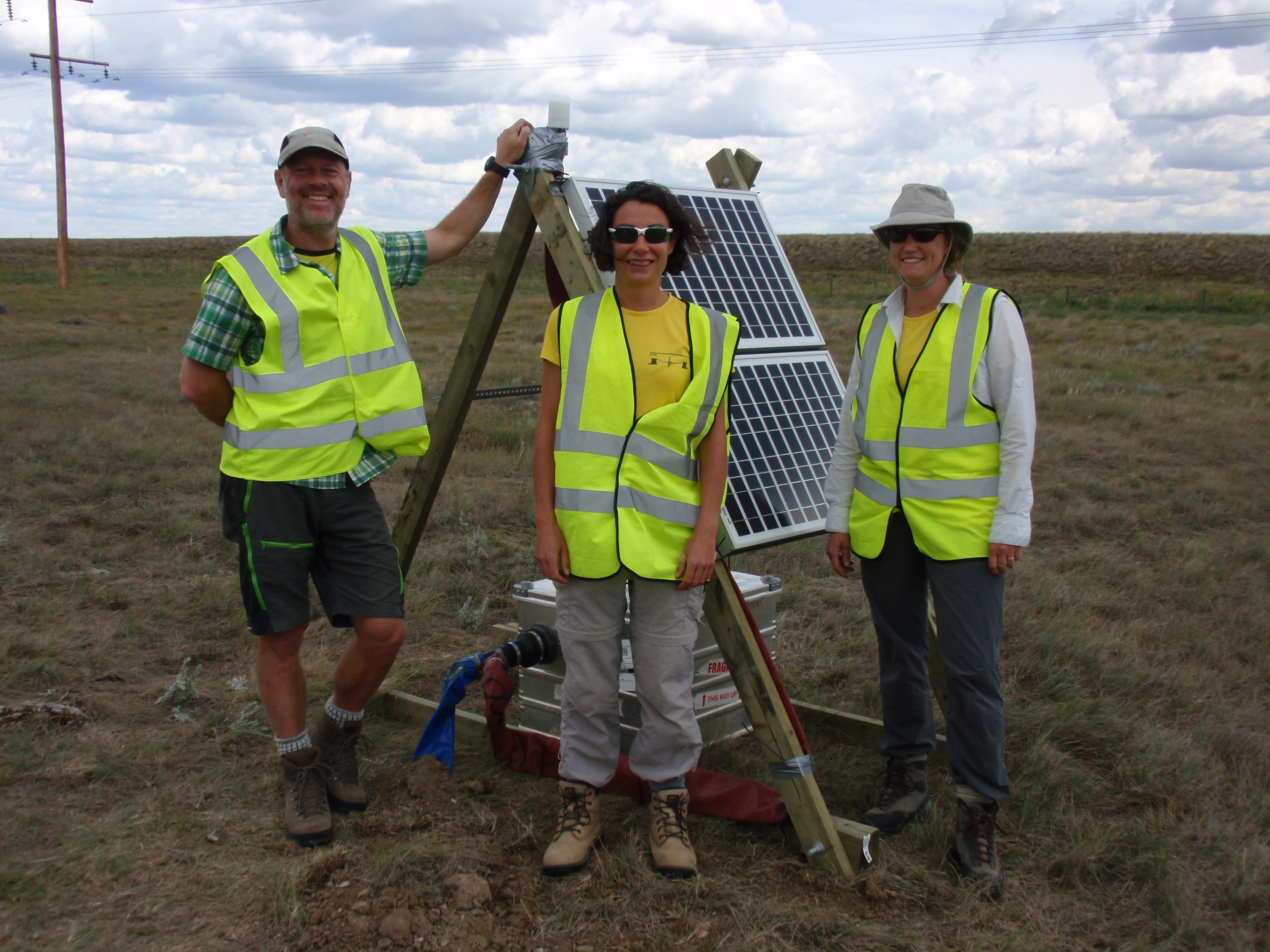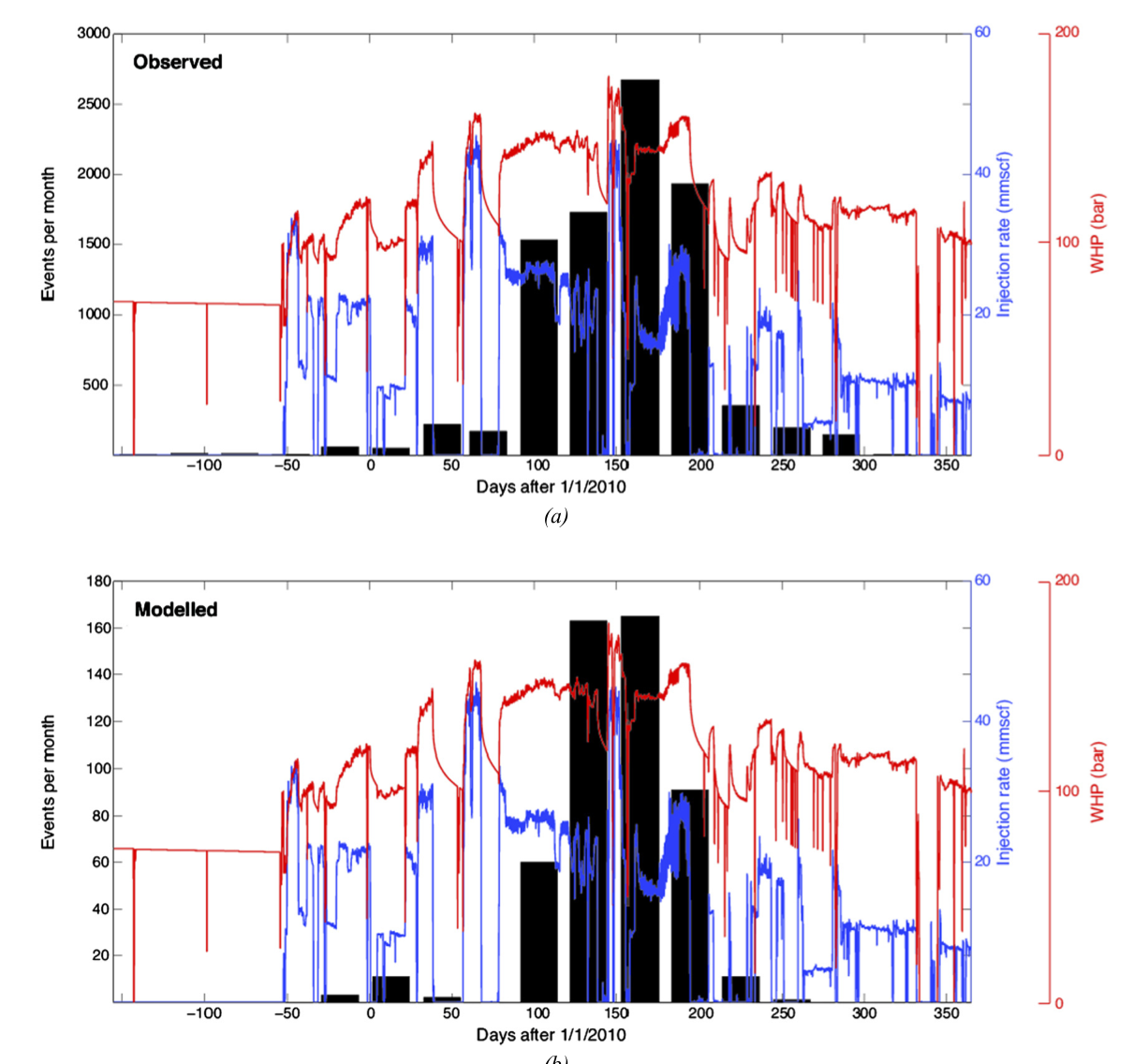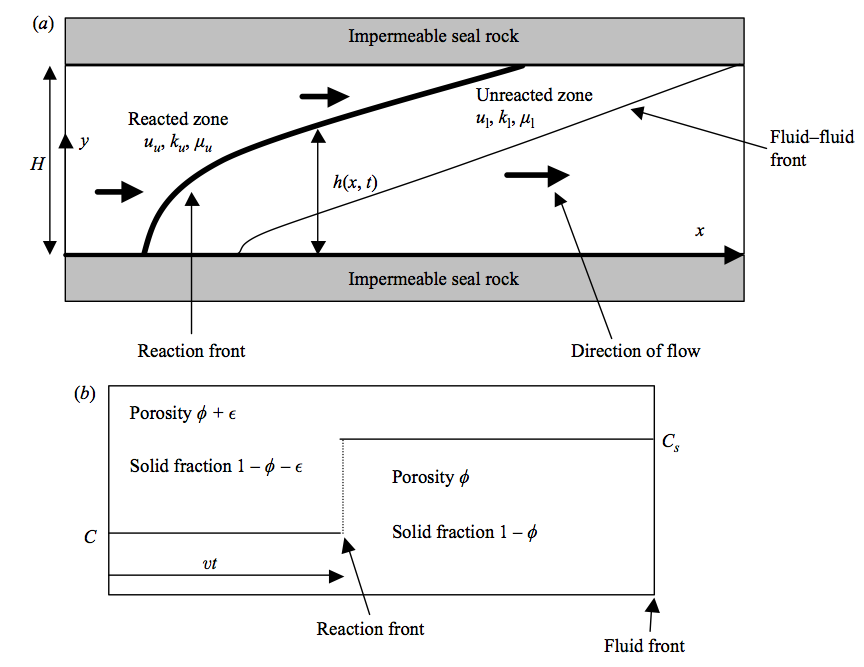Research Areas
The BCOG group covers a range of research areas covering microseismic monitoring, geomechanical modelling, 4D seismic monitoring and geochemical reactions.Microseismic Monitoring
Injection of CO2 into reservoirs will increase the pore pressure. This will impact the effective stress field within both the reservoir and surrounding rocks. Changes in the effective stress field can generate microearthquakes. These earthquakes with magnitudes commonly between -1 to -3 (microseismicity), are too small to be detected at the surface, even by sensitive seismometers, but they can be detected by geophones placed in boreholes near the reservoir. This technique has been increasingly deployed in oil reservoirs over the last 15-20 years as geophones sensitive enough to detect the microearthquakes have been developed. The techniques used to identify, locate and analyse the microearthquakes are generally derived from conventional earthquake seismology.
Recently, unplanned induced seismicity associated with fluid injection has raised important research questions about the causes and consequencs of induced seismicity. Understanding when larger magnitude earthquakes might occur at CO2 storage projects is important for long-term safe storage of CO2.
The group is and has been a microseismic research provider to three major CCS projects that have deployed passive seismic monitoring arrays, the In Salah project in Algeria and the Weyburn and Aquistore projects in Canada. The group is also involved in monitoring the CMC Research Institutes’ Field Research Station (FRS) in Alberta, Canada, where a wide range of monitoring techniques will be tested to map and measure the impact of carbon capture and storage. CO2 injection is expected at this site in late 2016.
 Broadband seismometer deployment at the FRS in Alberta. |
Geomechanical Modelling
To understand a CCS site response to CO2 injection it is vital that, given the concerns surrounding CO2 leakage from a storage site, the geomechanical response of a reservoir to injection is modelled prior to injection, and is monitored during injection. One of the most direct indications of geomechanical deformation is the triggering of seismic and microseismic events. Large-magnitude seismic events are clearly undesirable for CCS projects but smaller microseismic events may prove helpful in understanding the geomechanical response of the reservoir. The group has developed approaches to simulate microseismic activity induced by injection, which allows us to compare geomechanical model predictions with observed microseismic activity. This work has combined full-field reservoir and fracture models for the In Salah project to simulate Mohr-Coulomb failure induced by injection activities.
 Observed and modelled rates of seismicity through 2010. Red lines show the CO2 injection rate. There is good correlation between the relative rates of seismicity through time, with seismicity peaking in May and June 2010 (Verdon et al., EPSL, 2015). |
Geochemical Reactions
The injection of CO2 into the subsurface will disturb the chemical equilibrium between reservoir rocks and pore fluids, leading to chemical reactions. The first reaction that will occur is the dissolution of brine into residual water in the pore space, creating a mildly acidic fluid:
CO2 + H2O ↔ H2CO3.
The acidity will be buffered by reaction with carbonate minerals in the rock,
MCO3 + H2CO3 ↔ M2+ + 2HCO3-,
or by reaction with silicate minerals such as feldspar,
KAlSi3O8 + Na+ + H2CO3 ↔ NaAlCO3 + 3SiO2 + K+.
The rates of these reactions can be confirmed by experimental tests. However, we do not know the physical effects that such reactions will have on storage systems. We do not know whether reactions between injected CO2 and reservoir rocks are beneficial, and to be encouraged, as they reduce the leakage risks by enhancing the volume of CO2 locked away in aqueous or mineral form, or whether they are deleterious and to be avoided, because they risk the integrity of the storage formation, and make it harder to predict and monitor the flow of CO2.
A particular concern is the effect that reactions will have on the flow of CO2 through the reservoir. By dissolving material, reactions will increase the permeability in the reacted zones, creating a feedback effect where, the greater volume of CO2 flowing, the greater the degree of reaction and permablility increase, and therefore the flow is further focused, causing fingering of the flow front. This effect is depicted below - we developed an experimental Hele-Shaw setup and an analytical model to simulate this effect.
 Model showing the effects of CO2 rock reactions increasing permability and causing fingering of the CO2 flow. |
One of the aims of our research is to quantify the effects of geochemical reactions on the porosity, permeability, mechanical strength and seismic properties of the reservoir rocks. We use experimental techniques to measure these effects, and reactive transport simulation to model the consequences for the integrity of storage formations.

